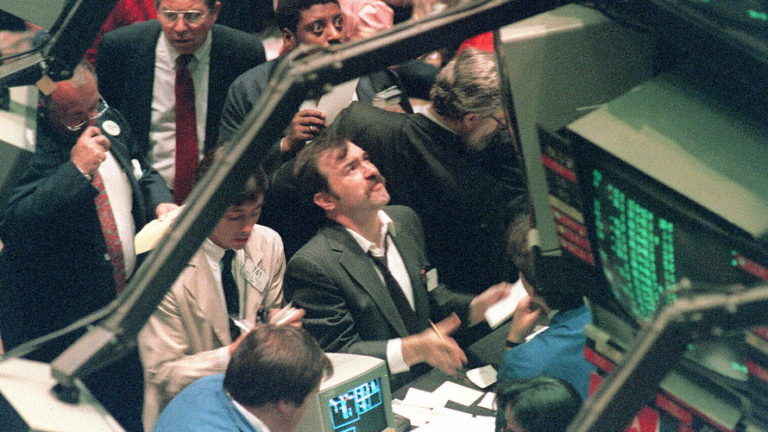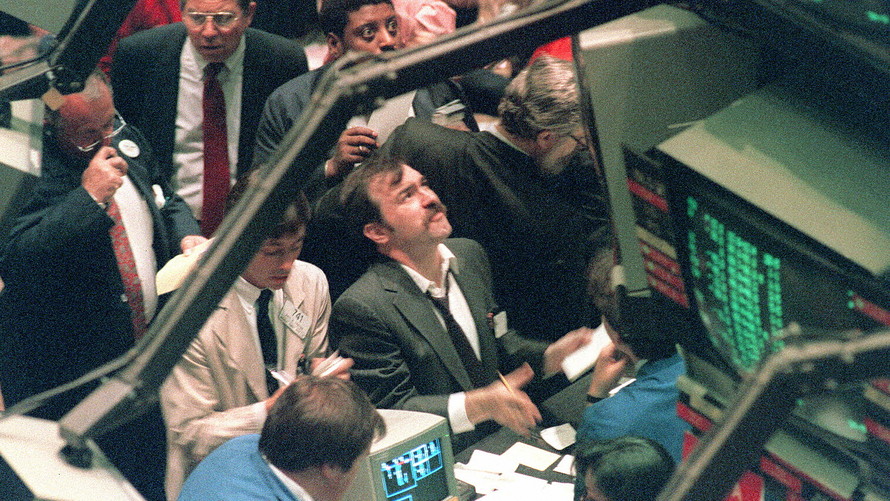

The Dow Jones Industrial Average could drop more than 5,700 points in Friday’s trading session.
Impossible, you say?
Think again. On Oct. 19, 1987 — 31 years ago today — the Dow DJIA, -1.27% plunged 22.6%. It was the worst stock-market crash in U.S. history. An equivalent percentage drop today would cause the Dow to skid more than 5,700 points.
To be sure, just because the stock market could suffer a similar fate doesn’t mean it is likely. But most investors don’t even acknowledge that it’s possible.
They’re kidding themselves.
Consider a study conducted several years ago called “Institutional Investors and Stock Market Volatility” by Xavier Gabaix, a finance professor at Harvard University, and three scientists at Boston University’s Center for Polymer Studies: H. Eugene Stanley; Parameswaran Gopikrishnan, and Vasiliki Plerou. After analyzing decades of stock-market history, in both the U.S. and other countries, the authors devised a formula that predicts the frequency of stock-market crashes over long periods of time.
A single-session drop as big as 1987’s is predicted by their formula to occur once every 104 years, on average. Note carefully that this doesn’t mean a crash this big will occur every 104 years. This instead will be their average frequency over long periods.
So it’s possible that we will not experience another 1987-magnitude crash in our lifetimes — or that another will occur today.
What causes the market to crash? The researchers argue that it’s because all markets, to a more or less similar degree, are dominated by their largest investors. And when those investors simultaneously want to get out of the market, for whatever reason, the market will crash.
The researchers therefore believe we’re kidding ourselves if we think that regulatory reforms put in place since the 1987 crash will be able to prevent another crash. Consider circuit breakers, trading halts and the like, for example. However effective they might be on the New York Stock Exchange and the Nasdaq Stock Market — and many experts have serious doubts — they will be powerless to prevent the sales of U.S. stocks that are listed on foreign exchanges or via the short sale of stock index futures contracts or options.
The markets are globally interconnected and largely unregulated, in other words.
By the way, the researchers’ formula can be used to predict the frequency of crashes of any magnitude. Less severe drops will, not surprisingly, be more frequent. A 5% daily drop is forecasted to occur 61 times over the next century, for example, while a 10% daily drop should occur eight times over the next 100 years.
That works out to a 5% daily drop every 1.6 years, on average, and a 10% drop every 13 years.
I need not remind you that it’s actually been seven years — since August 2011 — since we suffered from a 5% daily decline, and over 30 years since the market endured a 10% daily decline.
The stock market over the last couple of decades has been unusually calm, in other words. It might not seem that way, especially over the last week as the Dow has suffered several days of triple-digit declines, including 327 points on Thursday. But we’ve been spoiled by the market’s relative tranquility.
To George Santayana’s famous line, those who cannot remember the past are condemned to repeat it. Don’t wait for another 1987-magnitude crash to learn this lesson the hard way.